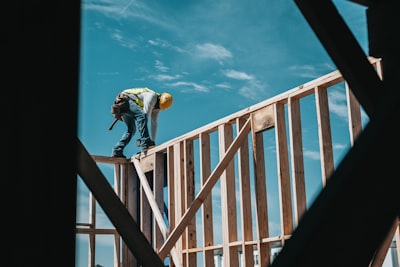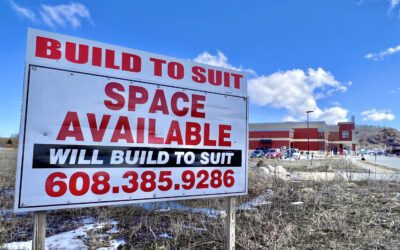Article Highlights
- Contractors & Realtors explain the roadblocks to building and developing in the City
- The problems with the City’s spot zoning past is haunting its future
- The mayor shared the path forward with floodplain issues on the north side
City of La Crosse Mayor Mitch Reynolds had heard the rumors of roadblocks builders and developers encounter when starting projects within the City. It was the first question the Mayor asked when meeting with the La Crosse Area Builders Association in order to, as he says, streamline government. The builders, subcontractors, and realtors at the meeting didn’t hold their comments back, stating developing property in the City of La Crosse is too difficult.
“Oftentimes it feels like the City is trying to come up with roadblocks,” said builder Mark Etrheim (MasterCraft Homes), who is building the town homes on the former Trane Plant 6 property near La Crosse Footwear – aka Fifth Ward. The development, spearheaded by Three Sixty Real Estate Solutions, also includes Borton Construction as the contractor for the apartment complex.
”Other cities feel like they are trying to help us figure out how to meet the rules,” said Etrheim. “The difference is in the attitude.”
A $6,000 Example
Etrheim gave a $6,000 example with the Firth Ward project. The team met with department heads frequently as the plans were developing. Eight months into the process, a City staff member pointed out something he disliked in the plan. A member of the team pointed to an earlier plan that everyone had gone over that they had to change. It included what the staffer was now requesting. Every change adds cost to the project and impacts affordability. “That’s why most of us resist doing work in the City of La Crosse,” Etrheim said. “We all will do it, but we know it is going to be more work to get approvals.”
Challenges with an Aging City
Jon Olson (Olson Construction), who was on the City Council in the 2000s, said that due to the age of the city, “It’s difficult to make the economics of infill housing work.” Infill housing is working with an existing properties or land within fully developed areas versus building in a newly developed area. Olson explained that the City’s spot zoning policy years ago is costing it now. In spot zoning, the City allows for individual properties to change its use (ex. from residential to commercial) even if it does not fit with the use of properties next to it. The belief was that the adjacent properties would also change to the new type of use over time. Instead, Olson says, “La Crosse has a lot of empty building because of spot zoning. [A property] sits next to a house. No one wants to buy it because they have to go back to the City to get a conditional use permit. So, the building is sitting empty … and the process is difficult because there’s resistance from the City to get a zoning appeal.”
Floodplain
The Builders Association members pointed to the small homes and floodplain issues as some of the City’s challenges. The mayor stated he was “going to be pushing some dollars into [floodplains] so that they can reduce the damage of flood hazard mitigation or actually physically removing homes out of the floodplain.”
“We have got to build more homes,” Mayor Reynolds said in his words to the organization. “If I can pave the way to do that, I am going to.”





